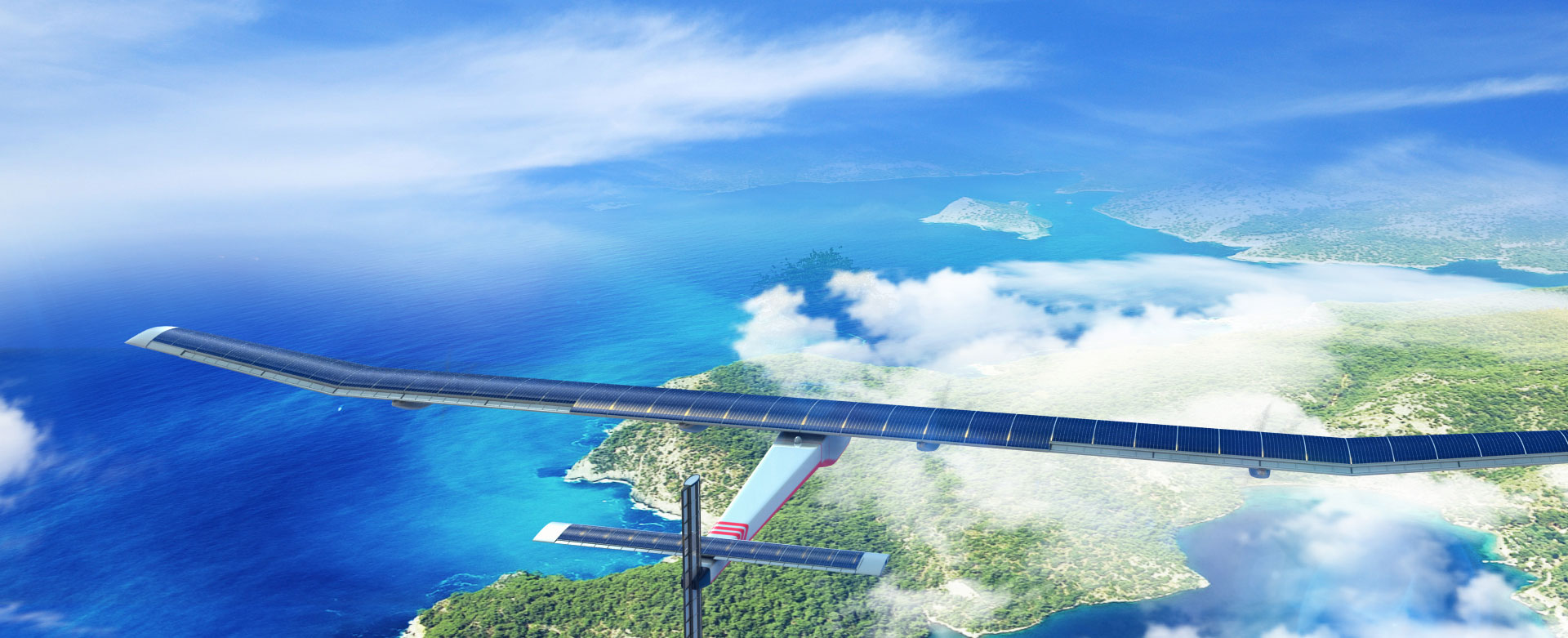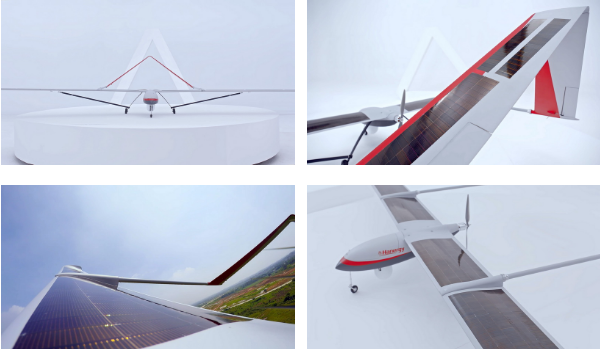
Solar UAV
Fixed-wing UAVs have a wide wing area to facilitate their surface to accommodate a large number of solar cells. As early as the 1980s, Helios developed by NASA has successfully confirmed that solar cells have great potential. Hanergy’s efficient gallium arsenide battery technology (conversion efficiency for single-junction GaAs is 28.8%and for double-junction GaAs31.6%) is combined with UAVs organically, creating endless possibilities for the development of UAVs in the future.

The high-altitude long-endurance UAV is used for military operations and has the advantages of fast speed, high altitude, and instant video signals provided.
The UAV has huge wings, easy for the pavement of efficient GaAs components, providing complementary electricity for fuel cells. It can fly at an altitude above 21 kilometers for several years, like a satellite. The size and voltage of GaAs modules can be customized, and the modules can be attached on the surface of the aircraft (including curved surfaces). The power-to-weight ratio is 1W/g, and power density is 250W/m2. GaAs modules can be used to provide power and continuous charging of the UAV during the flight, significantly extending the flight time. It reduces the number of “hard landings” and allows a wider range of monitoring, surveillance and communication tasks.
Hanergy’s 4.4m fixed-wing UAV uses thin-film solar cells, extending the endurance between 6 to 10 hours and the scope of work reaching 400 to 700 kilometers. It is the world’s most enduring industrial solar UAV, can be widely used in the military, civilian and commercial markets, including for oil and gas pipeline patrolling, agricultural monitoring, military police patrolling, disaster and emergency rescue, aerial photography and land surveying, natural resource testing, border and coastline patrols, mining monitoring and more.
